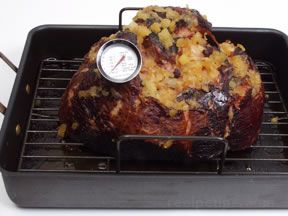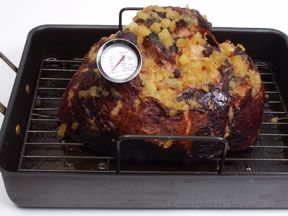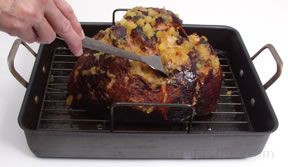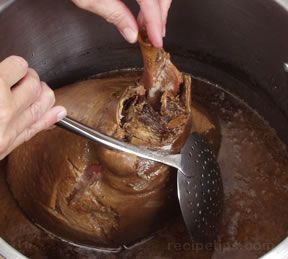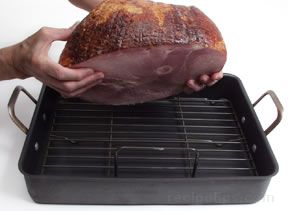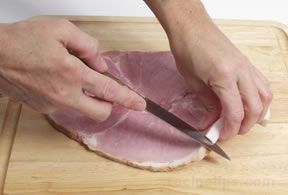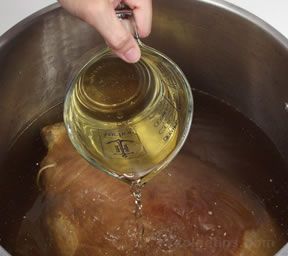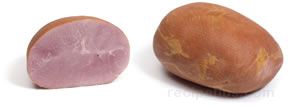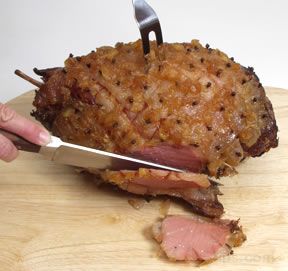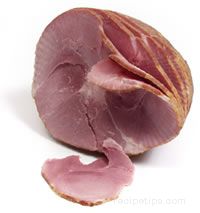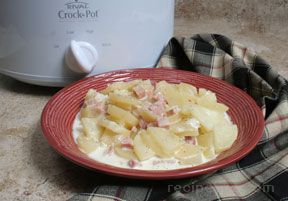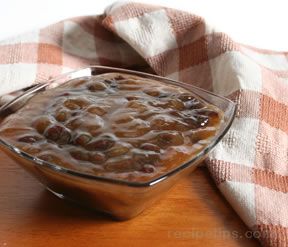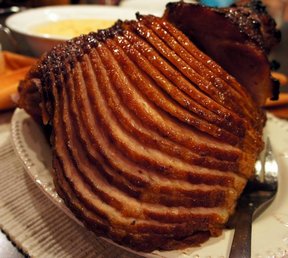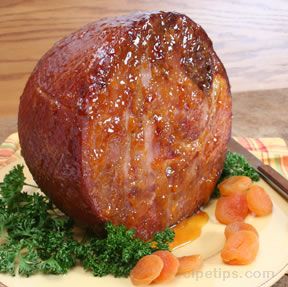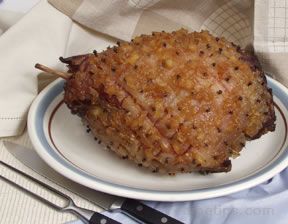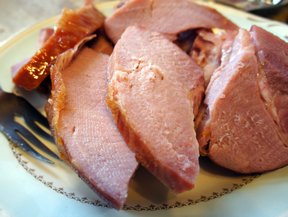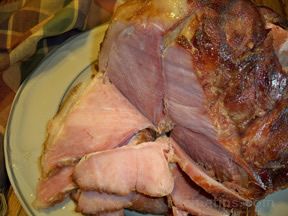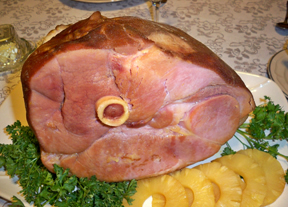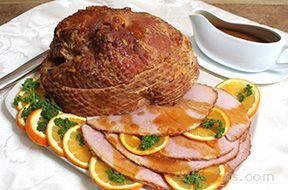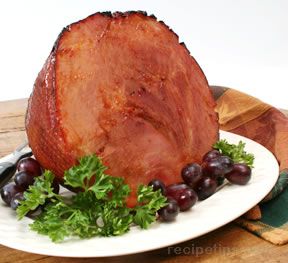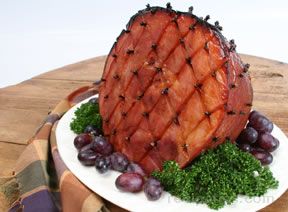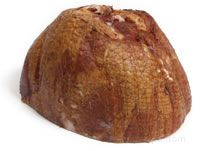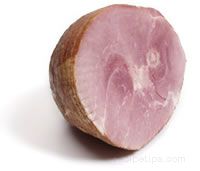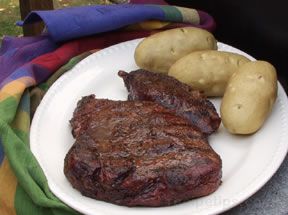When checking doneness it can be accomplished in basically the same manner for whatever cooking method you are using. There are several methods that can be used, but some are more accurate than others. Shown below are the methods that can be used.
Thermometer: Using a thermometer is the most accurate method for testing doneness. A regular meat thermometer is inserted before placing the ham in the oven or exposing it to the heat source that will be used. It remains there throughout the cooking time. An instant read thermometer is used to check for the proper temperature once the ham has been cooked. The ham is taken away from the heat source and the instant read thermometer is immediately inserted into the thickest part of the ham and it will give a temperature reading in approximately 15 seconds. When inserting a thermometer, care must be taken that the thermometer is not touching a bone or area of fat to ensure an accurate reading.
Ham slices, because of their thickness, are more difficult to check for doneness using a thermometer. If the slice is thick enough, it can be inserted from the side into the middle of the slice to get an internal reading.
When using a regular meat thermometer, check the temperature when it is getting towards the end of the cooking time. Remove the ham from the heat source when it reaches an internal temperature that is 5 degrees lower than the desired doneness temperature. If using a instant read thermometer, remove the ham from the heat source when it is getting close to the end of the cooking time and check the temperature. If it is within 5 degrees of the desired internal temperature, do not return to the heat source. If it is not within 5 degrees, return it to the heat source, wait 10 minutes, and then check the temperature again. Repeat this process until the ham is 5 degrees or less from the desired internal temperature.



